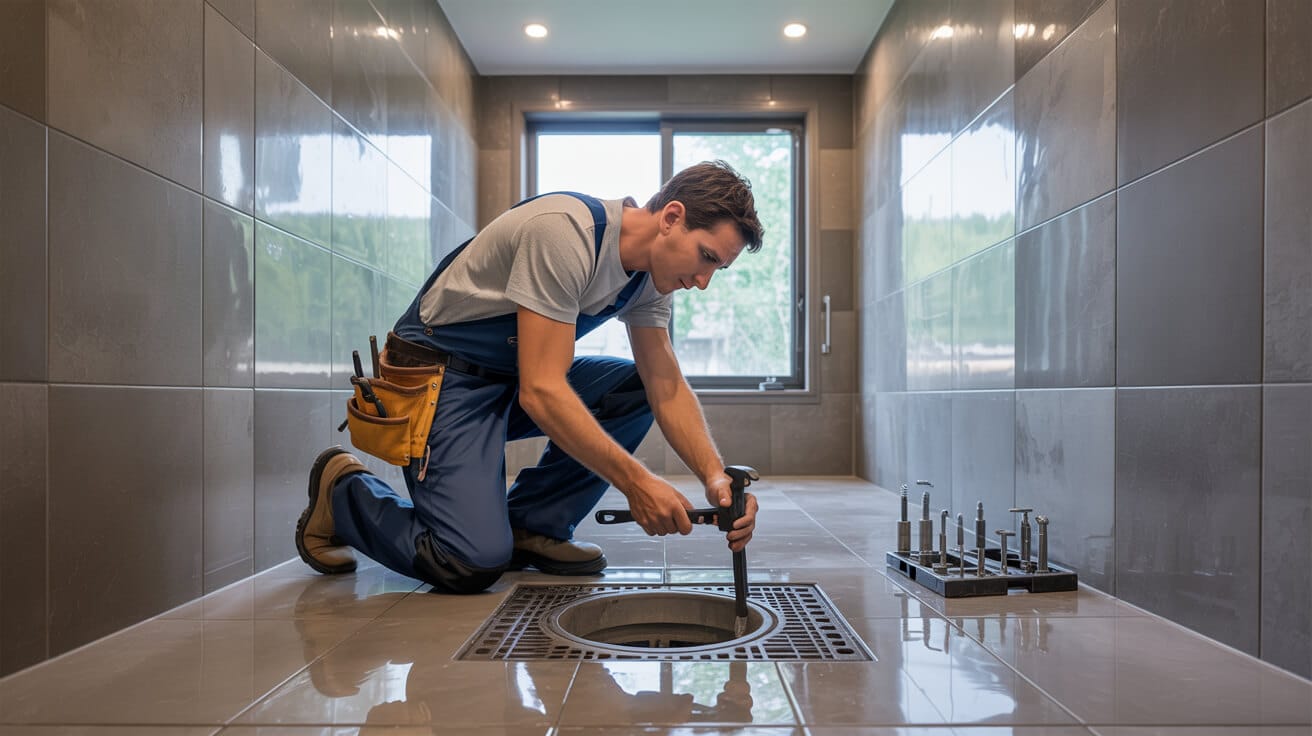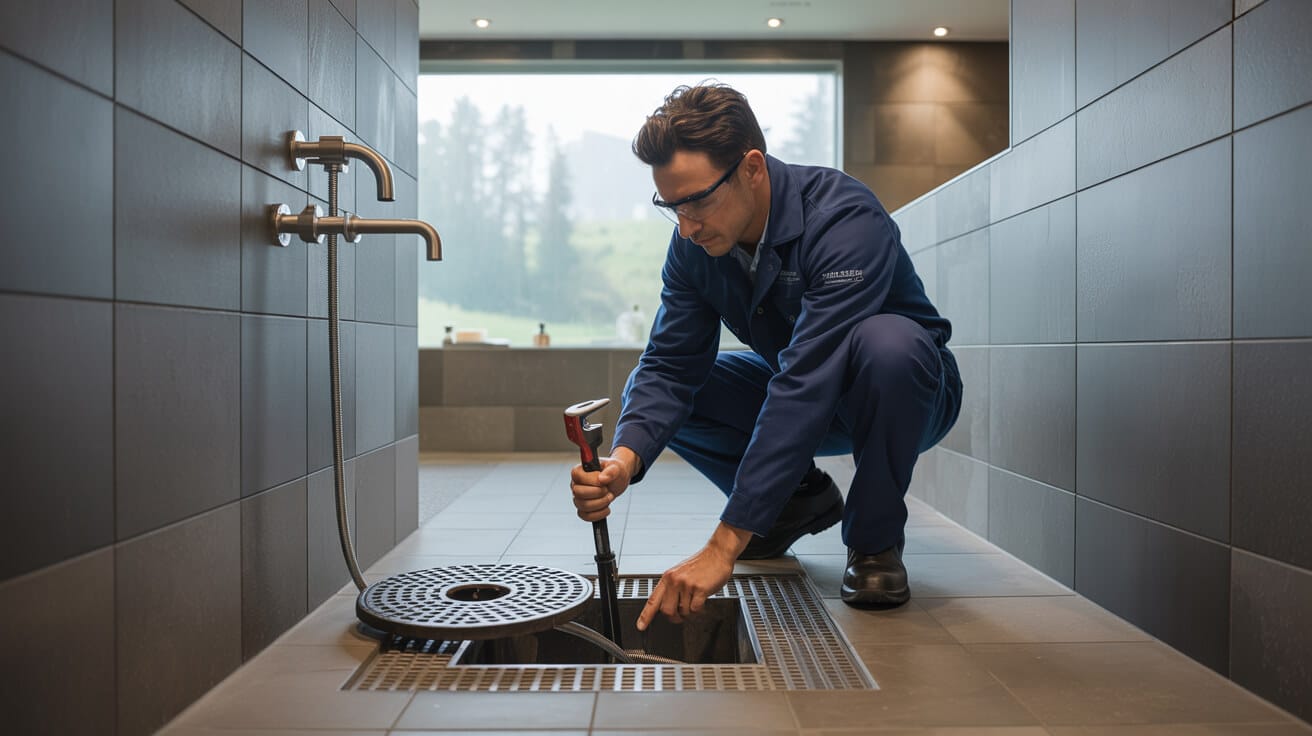Replacing a manhole cover is an event that reveals the underlying health of your property’s infrastructure, bridging the visible and unseen. A pedestrian in a city street, a facilities director reviewing a maintenance log, a landlord facing a compliance letter, or a homeowner anxious about odours and tripping hazards—all experience unique stakes. Each perspective centres on reliability, longevity, and the seamless functioning of essential services. When executed with care and expertise by professionals such as Plumbers 4U, cover renewal transforms risk into reassurance, combining technical rigour with process transparency and assurance of regulatory alignment.
Key emotional drivers—security for loved ones, protection for capital assets, continuity for operations—anchor your decision and shape solutions. Curiosity rises when a cover rocks or refuses to lift, but is satisfied in the discovery that best practices, legal norms, and high-grade components combine to deliver both peace of mind and measurable value across the service lifecycle.
Lead
Manhole cover replacement entails the systematic removal, evaluation, and installation of lids used to secure and permit access to underground plumbing, drainage, or heating infrastructure. Precision in specification, alignment, and legal compliance is central to maintaining the safety, access, and hygiene of your property or organisation’s water and heating systems. Engineered for defined load and site classes, these covers are replaced in response to visible degradation, regulatory updates, shifting asset loads, insurance mandates, or documented failures typically resolved by certified contractors and compliance-oriented service firms.
Etymology or Name Origin
The word “manhole” originates from historic utility practices, denoting an aperture of sufficient dimension to allow human entry to a subsurface space. Evolving constructions include “maintenance hole,” “inspection chamber cover,” and “access lid,” variations shaped by regulatory language, engineering standards, and shifting cultural norms. In the United Kingdom, the portmanteau “manhole cover” endures in professional and public discourse, while official documentation may prefer the neutral “maintenance cover” or technical references aligned with British Standards (BS EN 124).
Overview / Context
Access covers serve a dual function: physical separation of the subsurface network from the environment and system maintenance interface for pipework, drainage, and heating conduits. In the context of plumbing and heating, such covers often mark junctions, inspection nodes, or service loops, and are specified according to predicted traffic, environmental exposure, and network complexity.
Responsible cover stewardship also encompasses asset documentation, inspection routines, and insurance eligibility. Facilities managers, property owners, and maintenance contractors share obligations for routine inspection, responsive repair, and timely replacement in the service of safety, operational reliability, and minimal disruption to occupants or customers. At scale, this networked responsibility builds into broader patterns of public health infrastructure and urban risk management.

History
Origins
Early systems from the Roman period utilised flat stone or cladded timber as removable lids for aqueduct, sewer, or bathhouse maintenance, with archaeological records bearing witness to design innovations for ventilation and protection.
Industrial emergence
With the explosion of Victorian metropolitan infrastructure, cast iron emerged as a preferred material, supporting expanded underground sewerage, water, and heating demands. Cities such as London, Paris, and New York standardised both chamber size and cover dimensions in response to increasing vehicular loads and the development of public health codes.
Contemporary evolution
Modernization over the past 50 years has seen broader use of ductile iron, composite polymers, reinforced concrete, and steel, driven by the needs for lighter-weight, theft-resistant, and higher-load-rated covers. Technological improvements, including ergonomic lifting features, anti-slip surface textures, and even embedded warning signals, reflect a synthesis of structural science and policy refinement. The integration of asset tagging and GIS mapping deepens transparency and traceability, especially in urban, campus, and estate management.
Regulation and safety milestones
National practices converged into the European harmonised standard (BS EN 124), codifying load classes for all cover installations. Supplementary requirements, including the Construction (Design and Management) Regulations 2015 (CDM) and Water Regulations Advisory Scheme (WRAS) approvals, heightened the legal obligations for public works, commercial real estate, and residential developments to employ compliant, durable, and inspectable covers.
Concept / Description
A manhole cover consists of a load-rated lid and a seating frame (sometimes with locking or sealing mechanisms) engineered to resist vehicular or pedestrian forces, isolate chambers from external contamination, and deter unauthorised entry. Material selection—cast iron, ductile iron, composite, or steel—follows site-specific risk assessment: durability for highways, lightweight security for housing estates, chemical resistance for commercial kitchens, or electromagnetic neutrality for sensor-intensive environments.
Cover and frame geometry adapts to inspection chamber configuration. The frame provides level, load-dispersing support and serves as the interface between the lid and the subsurface chamber (typically constructed from brick, concrete, or polymer). Advanced variants include:
- Vented covers: Permit controlled airflow to avoid pressure build-up.
- Sealed/gasketed models: Ensure odour and liquid impermeability.
- Lock-bolt or twist-lock designs: Prevent theft and tampering in public areas or critical infrastructure.
Structural integrity is maintained by correct bedding in mortar, resin, or flexible bedding compounds matching the site’s substrate and load demands. Mechanical interfaces (hinges, handles) and markings (serial numbers, load ratings) are specified in professional asset logs.
Functionality / Purpose / Applications
System protection
Manhole covers physically separate utility networks from their external context. This shields pipelines, heating manifolds, and waste lines from debris, vehicle intrusion, unauthorised entry, surface water flooding, and unmonitored animal/pest access, thus preserving operational integrity.
Access provision
Covers are essential for authorised entry to enable routine maintenance: rodding of blockages, root intrusion remediation, leak tracing, heating circuit pressure verification, or integration of new system components. Their removable nature allows for rapid response to failures or emergencies.
Use case spectrum
- Residential properties: Covers safeguard garden or driveway chambers and often anchor asset records for home insurance and compliance (including “build-over sewer” agreements).
- Commercial premises: Multi-utility corridors, larger load classes, and asset tracking tools form layers of risk strategy for facilities directors.
- Public infrastructure: Highways and footpaths require durable, tamper-proof, and slip-resistant covers, often with strict documentation and inspection cycles managed in partnership with local authorities.
Classifications / Types / Variants
By material
- Cast iron: Heavy, highly durable, and suited for roadways and municipal footpaths.
- Ductile iron: Enhanced flexibility and fracture resistance, preferred for varying soil or foundation conditions.
- Composite: Lightweight, non-corroding, and low resale value, offering theft resistance and preferred for housing estates and telecoms.
- Steel: Common in light-duty or interior service rooms.
By load class (BS EN 124 overview)
| Class | Application Area | Test Load (kN) |
|---|---|---|
| A15 | Pedestrian/cycle ways | 15 |
| B125 | Car parks, driveways | 125 |
| C250 | Kerbside/rainwater gutters | 250 |
| D400 | Carriageways, industrial | 400 |
| E600 | Industrial docks, airports | 600 |
| F900 | Heavy industrial, airports | 900 |
By shape
- Round: Preferred for rolling and drop-in installations; minimises chance of accidental fall-through.
- Square/rectangular: Used in locations with tight geometry, narrow chambers, or requirement for flush alignment with adjacent surfaces.
By security or special feature
- Locking bolts: For theft-prone or safety-critical sites.
- Sealed: Odour/water tight, used in kitchen, food, or sensitive commercial environments.
- Vented: For pressure equalisation.
- Smart compatibility: Future-facing for asset tracking and digital maintenance.

Systems / Tools / Methodologies
Assessment protocols
Site surveys are anchored in asset registry data, visual inspection, load or movement testing, and digital documentation. Contractors may use CCTV or cavity camera inspection for underlying chamber assessment, especially where drainage or heating faults are suspected.
Essential and optional tools
- Lifting keys: and compliant mechanical lifters for safe manipulation
- PPE: (gloves, high-availability footwear, safety glasses)
- Barrier signage: for public-facing work
- Mortar, resin, or flexible bedding: materials for frame installation
- Asset tags (QR code, RFID, stamped serial number): for compliance traceability
Frame and cover removal
Old covers are loosened using keys or crowbars; debris and degraded grout are removed. New covers are inserted, checked for seating/alignment, and secured to prevent rocking, trip hazards, or water ingress. Surface reinstatement aligns with the original substrate (block paving, tarmac, or slab).
Documentation
Digital before-and-after photos, service logs, and asset records (including cover class, serials, instal date) are required for insurance, warranty, and compliance.
Stakeholders / Entities Involved
Direct roles
- Homeowners/landlords: Hold responsibility for maintenance and compliance of private assets.
- Facilities managers/property directors: Oversee multi-asset environments, prioritise operational uptime, occupational safety.
- Plumbers 4U engineering teams: Provide technical expertise, rapid intervention, and compliance documentation for all asset types.
- Tenants, commercial operators, and contractors: May require scheduled access, emergency support, or certification for asset logs.
Indirect participants
- Waste handlers/surfacing crews: Manage disposal, recycling, or reinstatement of affected surfaces.
- Local authorities/streetworks supervisors: Approve works on public land, enforce barrier and Section 50 compliance.
- Insurance adjusters/compliance officers: Audit maintenance logs and documentation for claims and regulatory audits.
Regulatory environments
Sector-specific standards are enforced by British Standards Institute (BSI), WaterSafe, WRAS, HSE (Health & Safety Executive), and, for public roads, Department for Transport specifications.
Legal / Regulatory / Ethical Considerations
Key regulatory codes
- BS EN 124: Classifies and prescribes load, material, and marking standards.
- WRAS: Ensures water system compatibility and prevents backflow contamination.
- CDM 2015: Mandates safe-site planning, trained operatives, and recorded risk assessments.
- Section 50 Notice: Required for works impacting public carriageways or adopted pathways.
- Duty of care and waste documentation: Obligates legal disposal, especially for covers with potential contaminant exposure.
Compliance and warranty
All installations demand proof of class compliance, asset tagging, and, where indicated, commissioning certification. Insurance requirements frequently mandate digital evidence and confirmation of professional (not DIY) installation.
Ethical principles
Contractors and owners should ensure public notification, site barrier use, and appropriate hazard communication during any works, prioritising the well-being of vulnerable users (children, elderly, disabled).
Performance Metrics / Data / Measurements
Load and compliance assessment
Performance is measured by testing loading per BS EN 124, anti-slip surface criteria, confirming secure seating (no rocking), and verifying proper seal in areas requiring odour or water tightness.
Maintenance and longevity
Service intervals for routine covers are generally annual but can move to monthly in high-risk or high-traffic environments; all interventions should be digitally logged for warranty validation and compliance oversight.
Digital asset management
Registers typically capture:
- Cover class and location
- Asset instal/replace date
- Inspection cycle and responsible party
- Documented images (for insurance and compliance)
Table – Inspection/Service Life Overview
| Application | Inspection Interval | Service Life Estimate | Digital Asset Tracking |
|---|---|---|---|
| Domestic driveways | Annual/as needed | 20–30 years | Yes |
| Commercial car parks | Semi-annual | 20–25 years | Yes |
| Public carriageways | Bi-annual/quarterly | 15–25 years | Required |
| Plant rooms/indoors | Annual/minimal | 20–40 years | Standardising |
Challenges / Barriers / Limitations
Operational and technical issues
- Access constraints: (trees, landscaping, parked vehicles) may delay replacement and raise costs.
- Legacy frame compatibility: often necessitates additional works, especially in period properties.
- Subsurface instability: (caused by weather, settlement, or poor historic installations) increases risk and complexity.
- Surge events: (flooding, heavy traffic) can accelerate unseen failures, requiring preemptive inspection.
Social and economic factors
- Budget considerations: may force property managers into staged replacement or prioritising only urgent covers, creating long-term risk.
- Logistical delays: in materials sourcing for non-standard sizes, anti-theft types, or specialised covers.
- Insurance claim complexity: around pre-condition evidence or documentation lapses.
Environmental and waste challenges
Disposal or recycling may require agreements with licenced waste handlers or retrofitting to new standards, especially when legacy covers contain hazardous substances.
Impact / Influence / Legacy
Replacement projects deliver a measurable reduction in trip, injury, or exposure risk and safeguard essential plumbing and heating functionality. Documented compliance supports insurance eligibility and regulatory audit for your company or organisation. Adherence to durable, well-documented replacements also contributes to local and urban infrastructure efficiency, aligning property management with broader community well-being and public policy.
Professional grade cover selection and installation, as offered by Plumbers 4U, set a gold standard for process transparency, technical excellence, and customer security, building enduring trust between service provider and those reliant on these often-invisible yet critical systems.
Future directions, cultural relevance, and design discourse
Technological evolution
Emergent trends see the increasing use of composite and recycled materials for improved sustainability, lighter lifting, and reduced theft. The advance of embedded asset tags and digital register synchronisation will forge closer links between on-site maintenance and organisational asset data, with nuanced insurance and compliance benefits.
Regulatory innovation
Insurance, governing bodies, and local authorities push for stricter documentation, digital auditing, and risk mitigation—especially in shared or public environments. New models of predictive maintenance seek to align AI-powered inspection cycles with real-world wear and surges in urban use.
Societal and aesthetic dimensions
Covers have shifted from anonymous infrastructure to design elements that bear the imprint of local authority, public works, or even artistic expression—serving as physical narratives across urban and private space.
Awareness that these systems underpin not just your property’s safety, but also your community’s environmental health and continuity, raises their profile. As this cultural shift matures, your engagement with timely, professional manhole cover replacement becomes a storey of stewardship and invisible public good—one where informed action, reliability, and care find resonance with your values and the infrastructure that sustains them.

